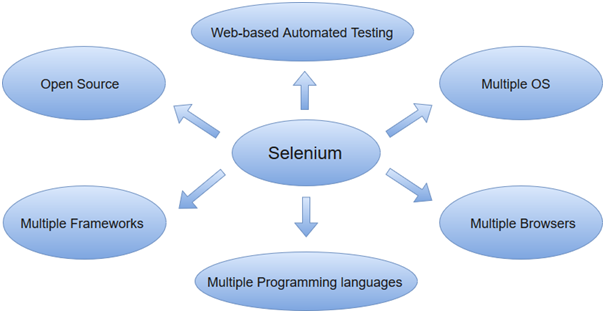

The UI-Element and Rollup tabs are for advanced Selenium IDE users only.The Log and Reference tabs give feedback and other useful information when executing tests.The Source View shows your script in HTML format.The Table View shows your script in tabular format with "Command", "Target", and "Value" as the columns.The Editor provides the interface for your test scripts.The Test Case Pane shows the list of currently opened test cases and a concise summary of test runs.The Base URL is useful in accessing relative URLs.The "Options" menu provides access to various configurations for Selenium IDE.The default format for Selenese commands is HTML.

The menu bar is used in creating, modifying, and exporting test cases into formats useable by Selenium RC and WebDriver.Firebug (or any similar add-on) is used to obtain locator values.

SELENIUM IDE TUTORIAL FOR BEGINNER PDF HOW TO
Locators are identifiers that tell Selenium IDE how to access an element.
Knowledge of JavaScript and HTML is required for intermediate topics such as executing the "runScript" and "rollup" commands.A rollup is a collection of commands that you can reuse to shorten your test scripts significantly. It must only be used as a prototyping tool. Selenium IDE (Integrated Development Environment) is the simplest tool in the Selenium Suite. After playback, each step is color-coded. This is where you create and modify Selenese commands. Most of the time, you will work on Selenium IDE using the Table View. It is available in two views: Table and Source. You can think of the editor as the place where all the action happens. At the bottom portion is a summary of the number of test cases that were run and failed. After playback, each test case is color-coded to represent if it passed or failed. The test case written in bold font is the currently selected test case. When you open a test suite, the test case pane will automatically list all the test cases contained in it. The test case pane shows you the list of currently opened test cases. In Selenium IDE, you can open more than one test case at a time. It allows you to group Selenese commands together and execute them as a single action. This button will allow you to step into each command in your test script.Īpply rollup rules. This will play only the currently selected test case in the Test Case Pane. This will sequentially play all the test cases listed in the Test Case Pane. Each browser action is entered as a Selenese command in the Editor. Record. This starts/ends your recording session. This controls the speed of your Test Script Execution. The list goes on and on until an appropriate one is found. If that element does not have an ID attribute, Selenium will next look for the "name" attribute since it is second in the list. In the setup below, when you click on an element with an ID attribute, that element's ID will be used as the locator since "id" is the first one in the list. Locators are ways to tell Selenium IDE which UI element should a Selenese command act upon. Locator builders. This is where you specify the order by which locators are generated while recording. Autostart record. If you check this, Selenium IDE will immediately record your browser actions upon startup. 
If you uncheck this, Selenium IDE will always launch with a blank value for the Base URL. Keep this checked if you want Selenium IDE to remember the Base URL every time you launch it. You can visit use "Selenium" as a keyword to search for the specific extensions. This is where you specify the extensions you want to use to extend Selenium IDE's capabilities. This refers to the time that Selenium has to wait for a certain element to appear or become accessible before it generates an error.








 0 kommentar(er)
0 kommentar(er)
